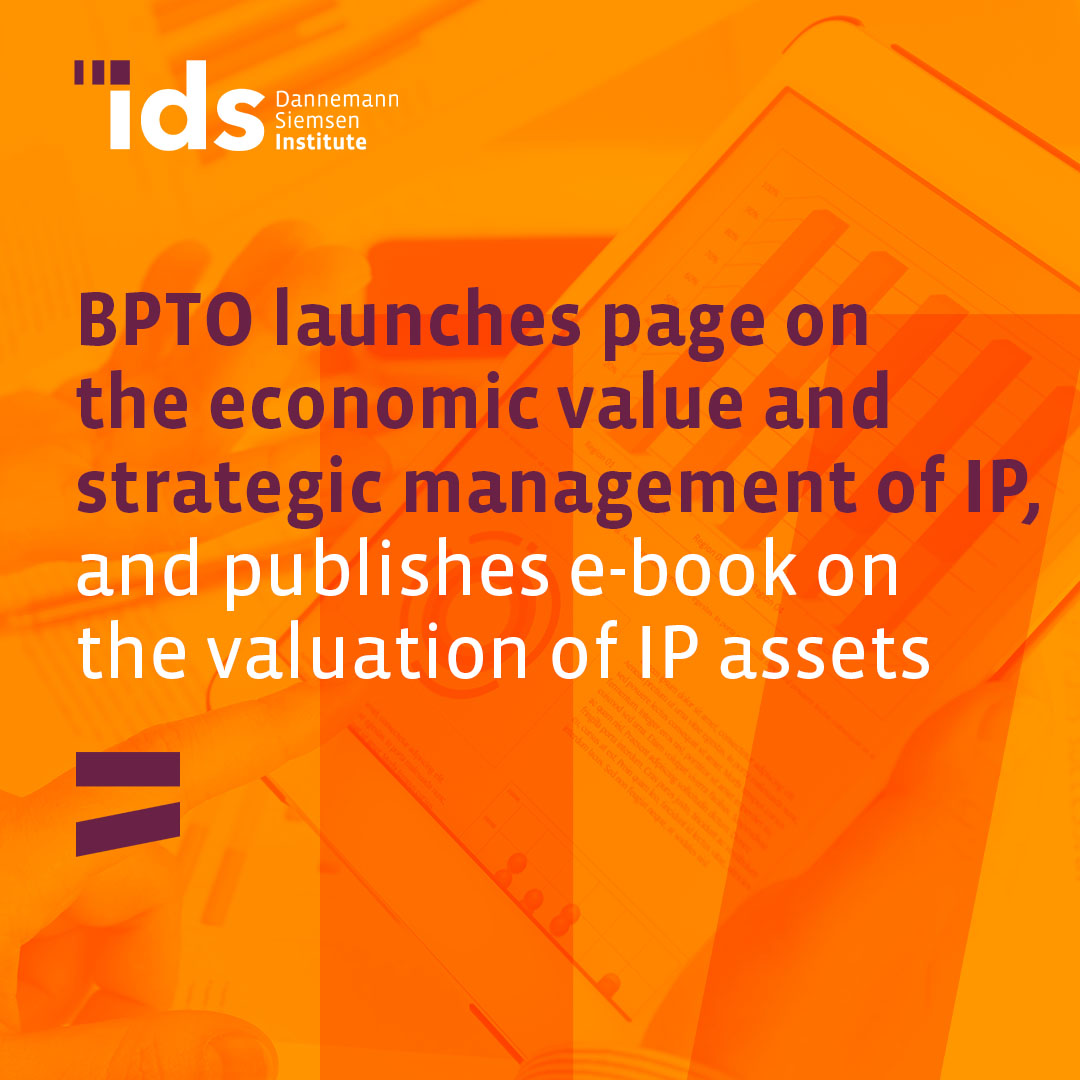02 de janeiro de 2025
Share
BPTO launches page on the economic value and strategic management of IP, and publishes e-book on the valuation of IP assets
The Brazilian Patent and Trademark Office (BPTO) launched a new section of “BPTO Data” and published the e-book “Valuation of Intellectual Property Assets: practical application in negotiation processes”. Both publications are part of Project 2.11 of the 2024 Action Plan, the aim of which is to develop the theme of valuing IP assets in Brazil, i.e. to explore the process of assigning value to Intellectual Property (IP) rights. The material is aimed at any agents involved with IP, whether they are entrepreneurs, universities or legal and economic professionals.
The new ” BPTO Data” section, available on the BPTO website, offers explanations and practical guidance on negotiating, valuing, financing, auditing and exporting assets protected by IP rights. For example, there are draft contracts for licensing technologies, self-assessment tools for companies to carry out the auditing process and guidelines for small and medium-sized IP exporters. The e-book, in turn, presents the main aspects of valuing intellectual property in commercial transactions, including the types of contracts often negotiated, the forms of remuneration from IP, and the valuation methods along with the practical application of these methods.
According to the e-book, IP rights are an intangible asset, i.e. a company’s property that is not physical and can be worth money. The process of assigning value to this asset is called valuation. In this sense, the material makes it clear that the IP market does not function like an ordinary goods and services market. For example, the value of IP is not equal to its development cost, which includes the investment made to create or register the asset, nor is it equal to its book value, since in accounting it is recorded at the amount spent to acquire or develop it, without reflecting its market value or the financial return it may generate in the future.
The value of the IP right only exists when it is exploited commercially, and its direct use, transfer (or negotiation) and financial management are strategies for creating value from the property. The direct use of IP, such as patents and geographical indications, can create competitive advantages and influence demand and prices. The transfer of IP rights, on the other hand, allows owners to put their innovations on the market without having the necessary production factors, as in the case of universities, or without having the necessary investments to exploit them directly, as in the case of franchises. The guide also emphasizes the importance of ongoing financial management in order to maintain or increase the value of IP over time.
The main types of existing technology transfer contracts are licensing and assignment. License agreements grant temporary permission for a third party to exploit an IP right, and can be exclusive or non-exclusive. Royalties, access fees and usage fees are commonly used to pay for the transfer of IP in this modality. In the case of assignment contracts, the transfer is permanent and the remuneration is generally set at a fixed amount.
In addition, the e-book presents the main ways of valuing technology. Quantitative methods estimate the value of IP assets using numerical data, while qualitative methods use characteristics such as their potential for use. The three main quantitative approaches used to value IP assets are: cost; market; and income. The cost method takes into account all the costs involved in creating and developing the IP asset and can take into account the amount needed to develop an exact or improved replica. The market method is based on a comparison with the price of similar transactions. The income method is based on the amount of revenue the asset is expected to generate over time, and its use requires the IP to be mature enough for market data to be available.
It is important to note that each method has advantages and disadvantages, and the choice depends on factors such as the stage of technological maturity and the type of contract to be developed. The stage of technological maturity can be identified by the Technology Readiness Level (TRL), a nine-level scale that describes the stage the technology is at, with the first level being the initial stage and the ninth, the most advanced. At the initial levels, valuation is generally done using the cost method, at the intermediate levels, using the market method, and at the advanced levels, valuation is done using the income method. The guide provides practical examples for each of the valuation methods, as well as cases in which they are used in combination: in the case of more mature technologies, for example, it is possible to combine the market and income methods.
Thus, the material made available by the BPTO presents strategies for creating value for IP assets, types of contracts and forms of remuneration, as well as detailing the main quantitative and qualitative approaches for valuing these assets. By adopting clear and specific criteria, IP valuation becomes more accessible and objective, without compromising the rigor required for each context.
The new INPI website and e-book can be accessed via the following links:
Valor Econômico e Gestão Estratégica da Propriedade Intelectual
valoracao-de-ativos-de-propriedade-intelectual_pt-br.pdf
Note: For quick release, this English version is provided by automated translation without human review.
